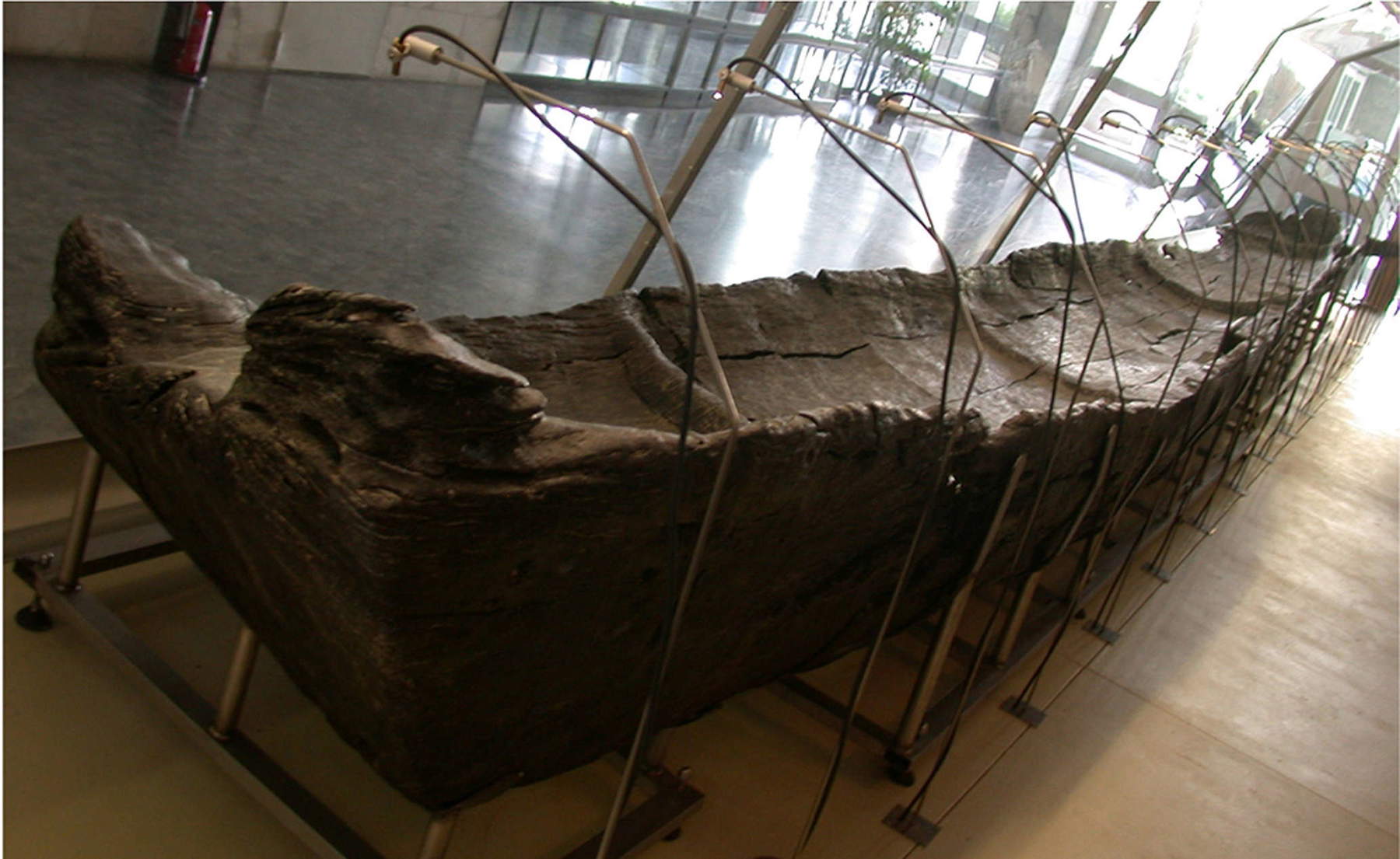More than seven thousand years old are the five canoes found at the submerged Marmotta site on the bottom of Lake Bracciano: the discovery, which sheds new light on the skills of ancient Neolithic societies in navigation and maritime technology, is thanks to theUniversity of Pisa and is the result of years of research and archaeological excavations conducted by a group of experts from the University of Pisa, the Museum of Civilizations and CSIC - Consejo Superior de Investigaciones Científicas, a state agency dependent on Spain’s Ministry of Culture. Thanks to their efforts, it was possible to accurately date these ancient vessels and better understand the historical and cultural context in which they were used.
The Marmot site, located about 300 meters from the current shore of Lake Bracciano and at a depth of about 11 meters, was excavated between 1992 and 2006. The underwater archaeologists involved in the project worked with dedication to explore and document this underwater archaeological site. The canoes and nautical objects found in the Marmot testify to the technological prowess of Neolithic societies in the area of navigation. These vessels were not only means of transportation, but also represented an essential tool for the expansion and development of communities along the Mediterranean coast. Thanks to their ability to navigate, ancient peoples were able to explore new lands, contributing to the spread of culture and knowledge in the ancient world. The accurate dating of the boats is the result of meticulous research, the results of which were recently published in the scientific journal PLOS.
Research on the five canoes found at the Groundhog site was conducted as part of the project directed by Niccolò Mazzucco, a researcher at the University of Pisa, together with Mario Mineo, former curator at the Museum of Civilizations, and Juan F. Gibaja, researcher at CSIC (Consejo Superior de Investigaciones Científicas) at the Instituto Milà y Fontanals de Investigación en Humanidades (IMF-CSIC). The research project was coordinated by the Instituto Milà y Fontanals de Investigación en Humanidades (IMF-CSIC), with the collaboration of the Escuela Española de Historia y Arqueología en Roma (EEHAR-CSIC), the Museum of Civilizations in Rome, the University of Pisa, and the National Accelerator Center (CNA) in Seville. Thanks to the joint efforts of these institutions and their experts, it was possible to conduct in-depth analyses and obtain important results on the dating and history of the five canoes found at the Groundhog site.
 The canoes
The canoes The canoes
The canoes The Groundhog
The Groundhog The Groundhog
The Groundhog“The Marmot is an exceptional site,” says one of the directors of the research project, Professor Niccolò Mazzucco of the University of Pisa. “It is located under the waters of Lake Bracciano where, under anaerobic conditions, artifacts have been preserved that under normal conditions would have to be destroyed. It is here that, between 1994 and 2005, thanks to excavations by the then Special Superintendence for the ’Luigi Pigorini’ Prehistoric Ethnographic Museum, now the Museum of Civilizations, the five canoes that are the subject of our study were found. These are exceptional vessels in terms of their state of preservation and size, with the largest being about 11 meters long. More importantly, they are canoes whose characteristics reveal a remarkably advanced navigation technology. Today, finally, thanks to carbon 14 dating performed at the National Accelerator Center (NAC), we can say with certainty that these boats are between 7,500 and 7,000 years old.”
“The technical complexity with which both the craft’s hull and certain elements associated with it were made are astonishing. Without a doubt we are dealing with the work of real naval engineers,” explains Mario Mineo of the Museum of Civilizations. “In addition to this, the data confirm that the construction of the canoes coincides with the time of occupation of the site, roughly between 5620 and 5300 B.C., when the first groups of farmers and shepherds who occupied the center of the Italian peninsula lived here. And this allows us to say that these are the oldest Neolithic canoes in all of Europe.”
 |
| Canoes found in Lake Bracciano are 7,000 years old. The discovery by the University of Pisa |
Warning: the translation into English of the original Italian article was created using automatic tools. We undertake to review all articles, but we do not guarantee the total absence of inaccuracies in the translation due to the program. You can find the original by clicking on the ITA button. If you find any mistake,please contact us.